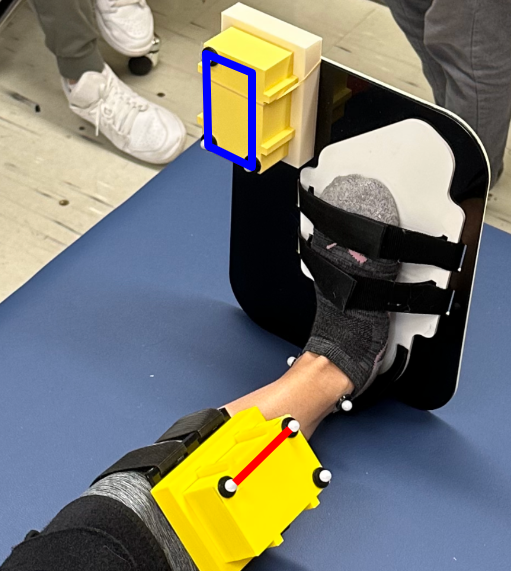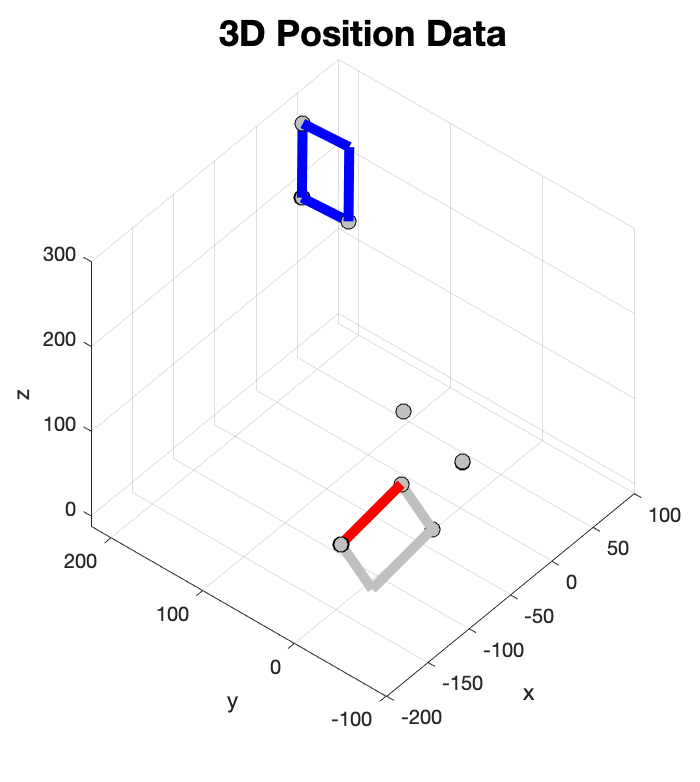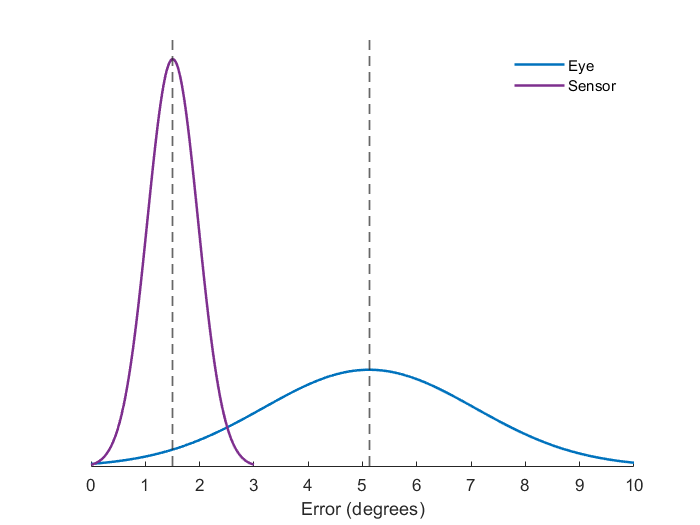Ankle Positioning Device - Senior Capstone
What?
During ankle surgeries such as complete joint replacements and fusions, ankle alignment is often eyeballed by the orthopedic surgeon. Unfortunately for the patient, misalignment can lead to long-term complications. While there are some existing methods for tracking ankle position during surgery (e.g. motion capture systems) they are prohibitively expensive for hospitals in underserved communities.
For my senior capstone project, I worked with three others to develop a lower-cost device used to achieve repeatable and precise ankle alignment through ankle tracking during surgery. I was responsible for the device's electronics, and developed the testing strategy used to validate the device's effectiveness.
How?
The final prototype of the ankle positioning device includes inertial measurement unit (IMU) modules mounted on a foot plate and the surface of the tibia. These sensor modules communicate sensor readings over bluetooth to a laptop, where a MATLAB script uses both readings to calculate foot dorsiflexion/plantar flexion in real-time. Once complete, the device was tested against the industry-standard estimation method using motion capture as ground truth.
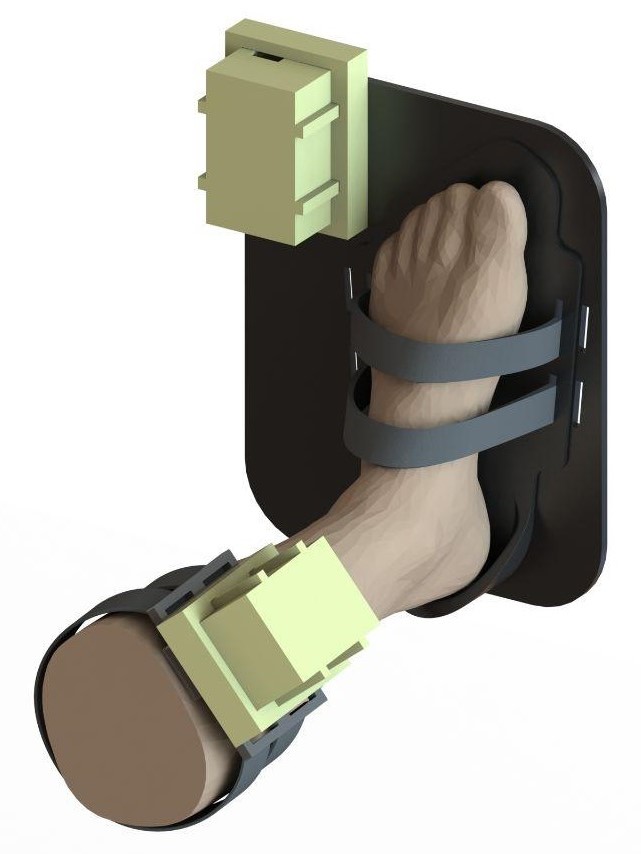
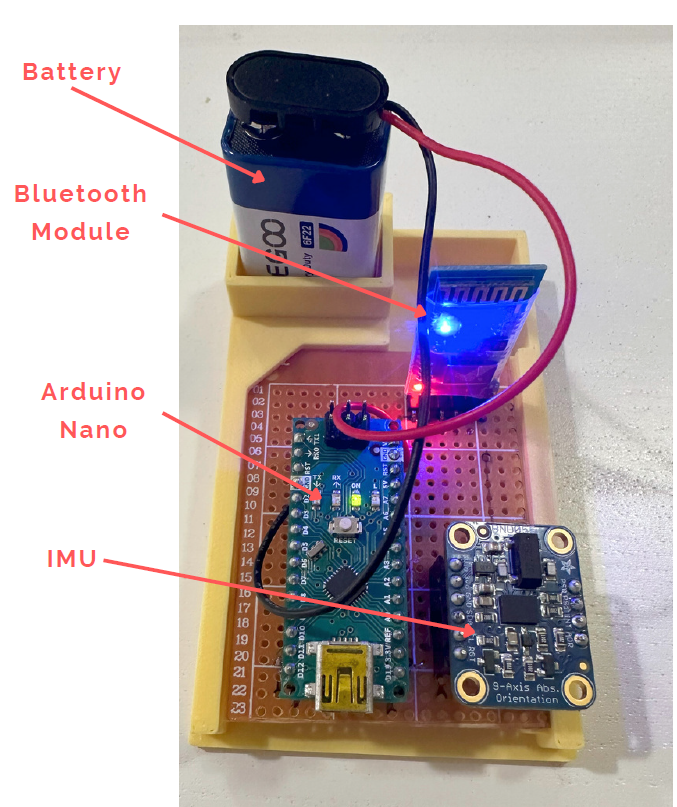
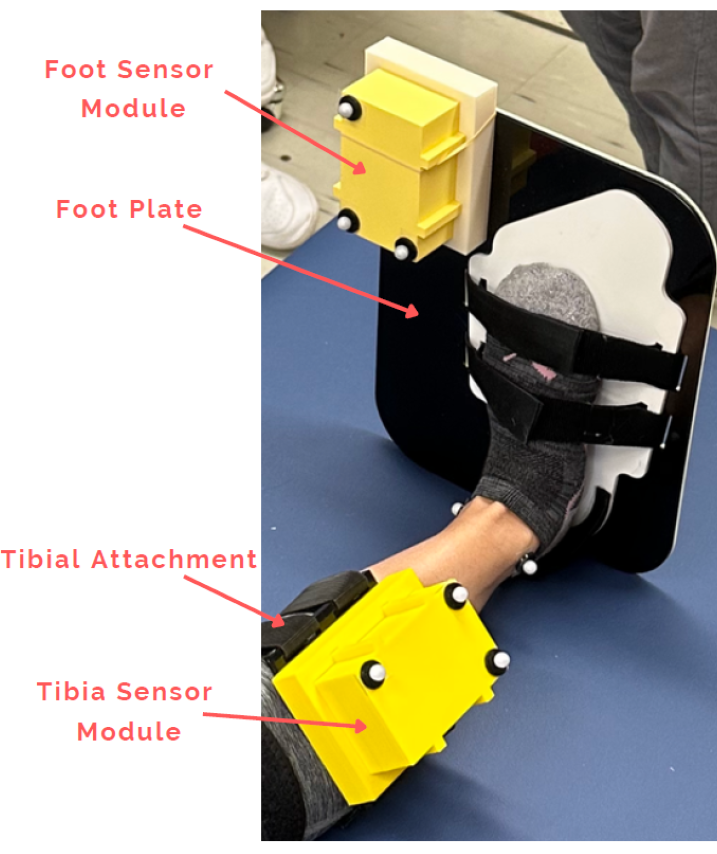
Results
The motion capture tests yielded a statistically significant (p < 0.05) reduction in ankle position error through the use of our device vs. without, and in all trials, the accuracy requirement of error < 2 degrees set by our orthopedic surgeon clinical mentor was met. This indicates that both accurate and repeatable ankle positioning could be achieved when using our device (even for engineering students without years of medical training!).
